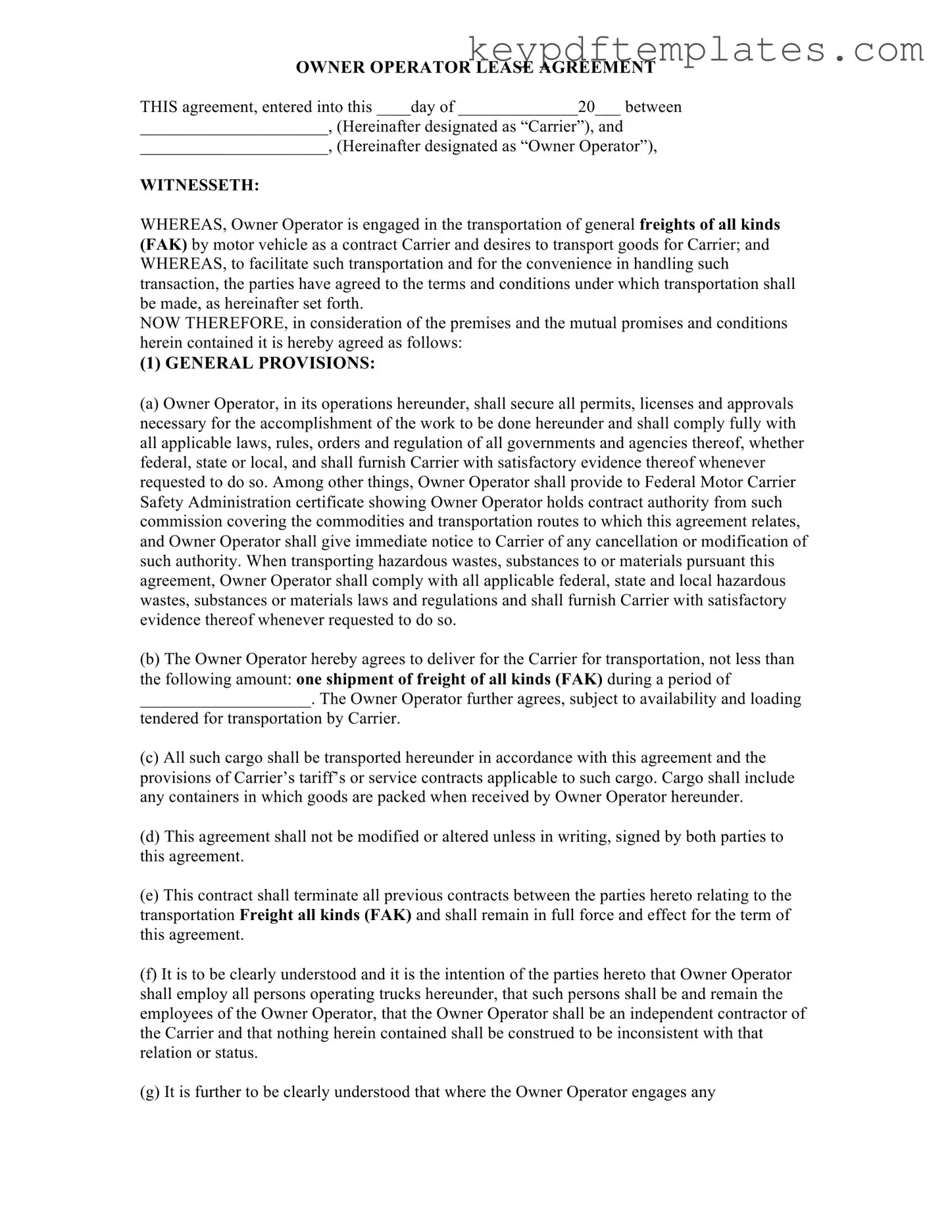1. Owner Operators are employees of the Carrier. This is not true. Owner Operators are independent contractors. They are responsible for their own operations, including hiring and managing their drivers.
2. The Owner Operator Lease Agreement is a standard form that doesn’t need customization. Many people think this agreement is one-size-fits-all. However, it often requires adjustments to meet the specific needs of both the Carrier and the Owner Operator.
3. Owner Operators do not need insurance. This is a common misconception. Owner Operators are required to have their own insurance that meets federal and state regulations, ensuring they are covered during operations.
4. The Carrier is responsible for all liabilities. In fact, the Owner Operator assumes significant liability for the goods they transport. They must defend and indemnify the Carrier against various claims.
5. Once signed, the agreement cannot be changed. Some believe that the terms are set in stone. However, modifications can be made if both parties agree in writing.
6. Owner Operators can freely assign their contracts to others. This is incorrect. The contract cannot be assigned without the written consent of the Carrier.
7. The Owner Operator is not responsible for hazardous materials. On the contrary, Owner Operators must comply with all regulations concerning hazardous materials and are liable for any issues that arise during transportation.
8. The agreement is only about payment terms. While payment is important, the agreement covers many aspects, including responsibilities, liabilities, and operational guidelines.
